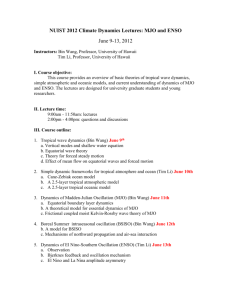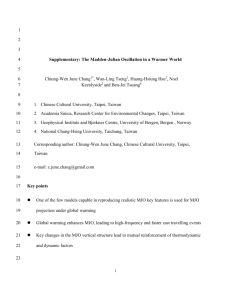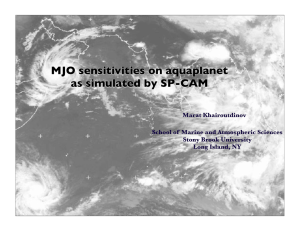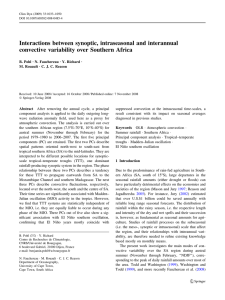Goal: Understand the principal features of the MJO
advertisement
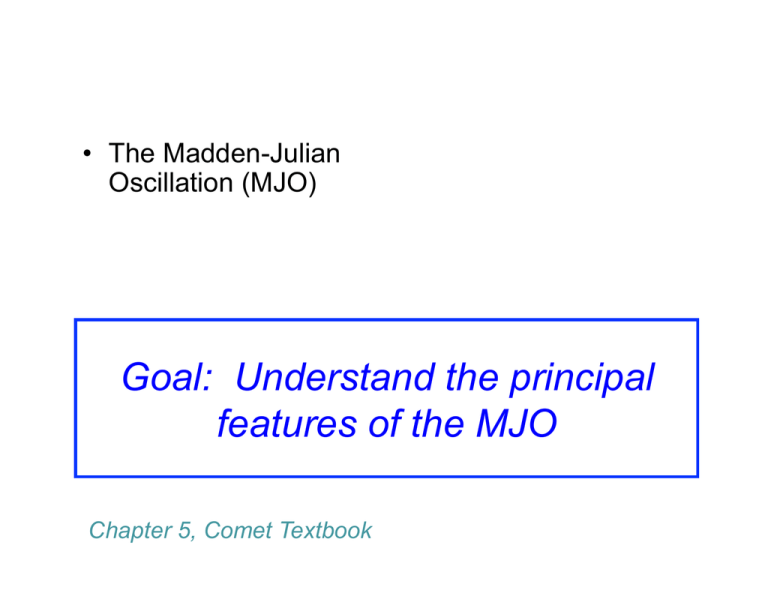
• The Madden-Julian Oscillation (MJO) Goal: Understand the principal features of the MJO Chapter 5, Comet Textbook Intraseasonal variability: timescales < ~ a season Madden-Julian Oscillation: Overview • The Madden-Julian Oscillation (MJO) is a coupled-ocean atmosphere phenomenon first identified and document in the early 1970s. • The MJO’s atmospheric component consists of an equatorial oscillation propagating eastward from the Maritime Continent at ~5 ms-1 [periods of 30-60 days] with a spatial scale of 12x103 - 20x103 km. • The atmospheric signatures are evident in surface pressure, lower and upper level winds, and fields tied to deep convection. Seasonally, the MJO is strongest in austral (Southern Hemisphere) summer • The MJO s oceanic component has slightly longer periods and is evident in SST, mixed layer depth, latent heat flux, and surface stress. MJO: Vertical structure MJO: OLR timeseries MJO: Formation and maintenance • Initially: latent heat release by convection, forcing Kelvin waves, but strictly speaking Kelvin waves propagate too quickly • External forcing theories: MJO owes its existence to external phenomena – Intraseasonal fluctuations from the Asian monsoon – stochastic convective forcing – Midlatitude interactions • Internal forcing theories: MJO creates its own energy source through feedback processes We will discuss these further in the study of tropical cyclones. – Wave conditional instability of the second kind [CISK]: ABL moisture convergence in low pressure areas forces mesoscale convective organization; moisture convergence also linked to forcing of Kelvin waves – Wind induced surface heat exchange [WISHE]: evaporation is the source of MJO instability MJO: Implications • Modulation of continental precipitation • Modulation of Asian, Australian, and African monsoons • Linkages to tropical cyclones and mesoscale convective systems • Contributions to ENSO variability • Rossby wave trains to higher latitudes West Coast Pineapple Expresses

